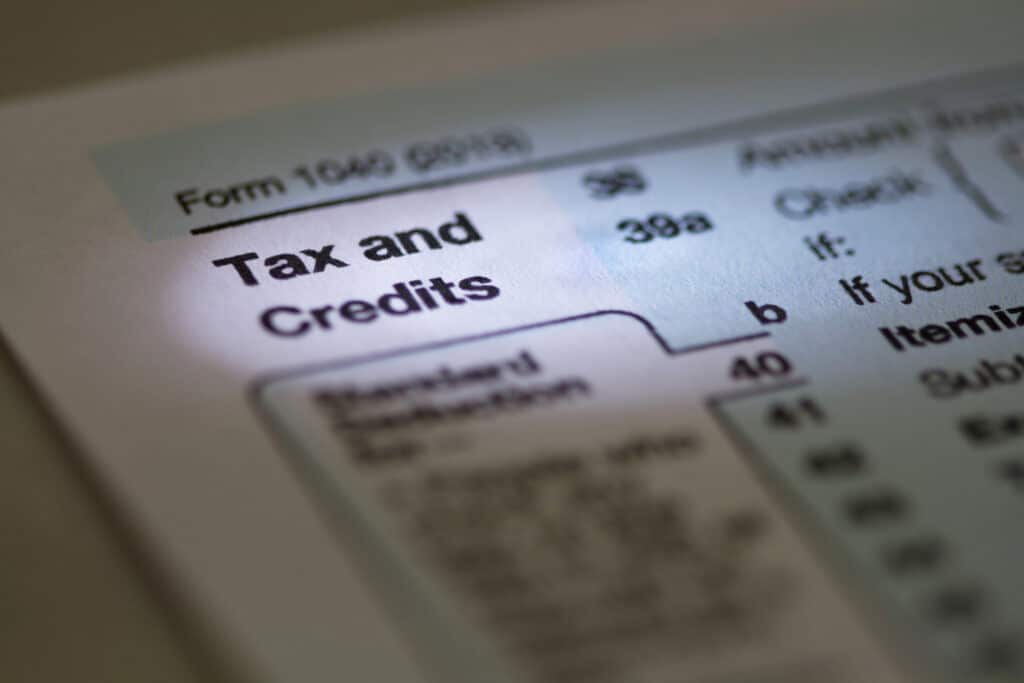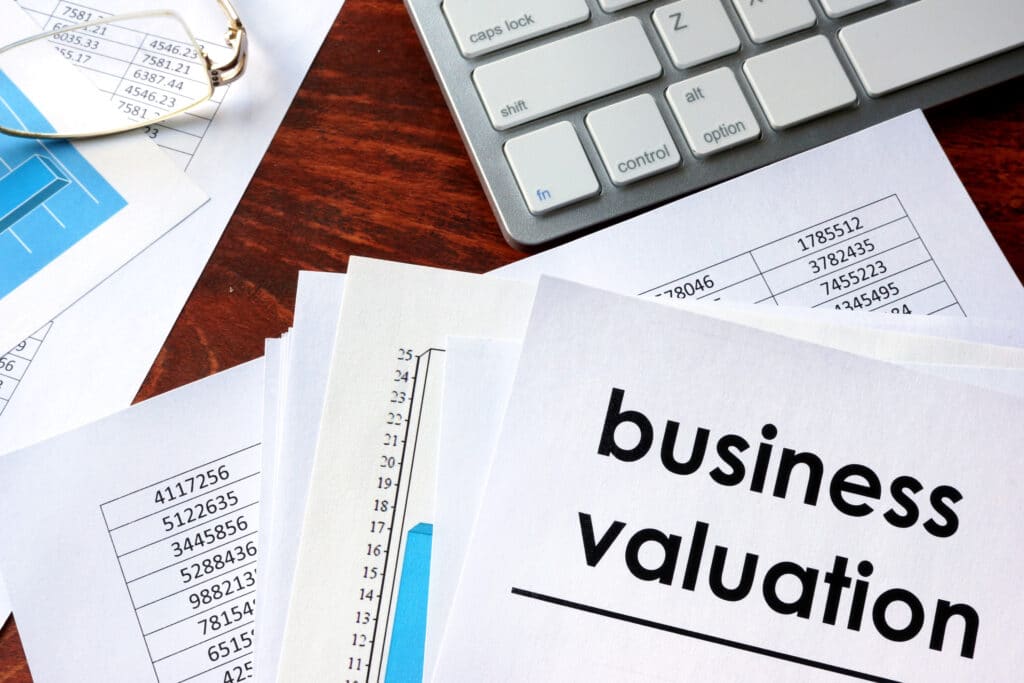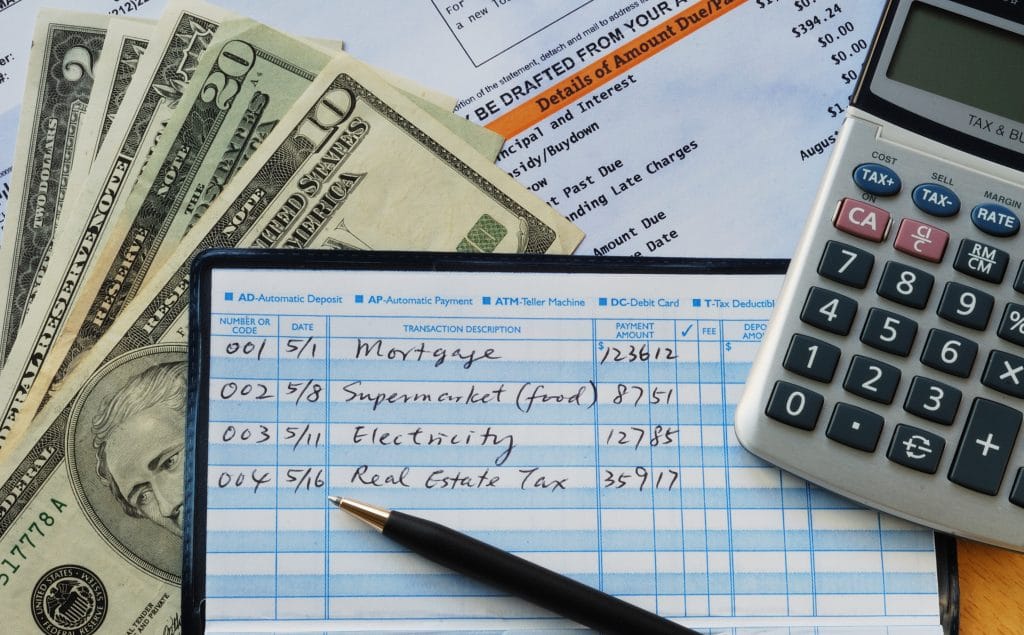With inflation raging and interest rates rising, it is more important than ever that your company is running efficiently so you can maintain your same level of income.
Every month your CPA will send you financial statements for your business.
Do you look at them? Do you understand what you are looking at? How they can help you to make decisions?
Financial statements are one of the most important tools for understanding the financial health of your business and are the basis upon which your tax returns are prepared.
During this live discussion led by Kami Elhert, Tom Gibson, CPA, will review the three financial statements your CPA sends you each month and why they are important, including:
- Balance Sheets
- Statements of Income and Retained Earnings
- Statements of Cash Flow
- How the three financial statements relate to one another
- How the three financial statements ultimately relate to your tax return
Transcript (edited for clarity)
Kami Elhert: Hello and good morning. With inflation prices rising, with inflation raging, and interest rates rising, it’s more important than ever that your company is running efficiently so that you can maintain the same level of income.
Every month, your CPA sends you financial statements for your business. Do you look at them? Do you understand what you’re looking at? And how can they help you make the right decisions for your business’s financial health? I’m Kami Elhert, senior client relationship manager, and today I’m joined by Tom Gibson, CPA, and TSP Family Office’s very own senior tax professional. Good morning, Tom.
Tom Gibson: Good morning, Kami.
Elhert: Thanks so much for joining us today.
Financial statements are one of the most important tools for understanding the financial health of your business and are the basis of which your tax returns are prepared. Those financial statements include balance sheets, statements of income and retained earnings or P&Ls, and statements of cash flow. Today, Tom will talk about how the three financial statements relate to one another and ultimately how the three financial statements relate to your tax return.
Tom, I know it’s that time of year when we’ll start asking for those financial statements, and I’m sure you’ve shown me a few billion times looking at these balance sheets. But I still am a layman when it comes to these documents and financials. I lean on you mostly to interpret those for me. Can you explain as you would to me what those forms are and how they relate to each other?
Gibson: Absolutely. Sometimes some of my clients will be a little bit sheepish about financial statements. I remember a conversation last year. We were working on a projection for a client, and I had the financial statements up on one screen and the workbook up on another, and we were coming up with what we thought the numbers were going to look like by the end of the year. This gentleman was an oral surgeon, and he said, “Tom, I went to dental school, went to college,” and he said, “I have absolutely no idea what you’re doing with these numbers.” My response was, “Doctor, don’t worry about it. I would be horrible at doing root canals.” So it’s just an acquired skill. I have been doing this for over 30 years now.
Now, if you’re in a comfortable place for the webinar, I’m going to encourage you to really quickly run and grab a cup of coffee. I’m going to try to make it entertaining, but accounting – nobody loves accounting, or very few people absolutely love accounting. I assure you no little boys grow up wanting to be a CPA, at least this little boy didn’t.
Here’s one of my favorite stories that my mom tells. I was about three or four years old. We were in what was then called Parks Belk, it’s Belk now, department store back home. The lady waiting on us asked me my name. I said, “It’s William Thomas Gibson, Jr..” And she said, “My, that’s a very distinguished name. Are you going to be President of the United States when you grow up?” I said, “No, ma’am. I’m going to be a cowboy,” and I have photographic evidence to confirm what I just told you. This is what I wanted to be. This is what I wanted to be, and now I’m a CPA.
In any event, financial statements. For a lot of you, the same CPA firm that is working with you on your tax returns at the end of the year, every month, sometimes every quarter, depending on how frequently you get your financial statements, roll out financial statements which you open and give to your office manager. He or she puts it in a workbook or a notebook, and it sits on your shelf much of the time. I mean, you might look at the net income number at the bottom. But past that, it’s a little bit of a mystery. We’re going to talk about the financial statement, just some general principles, and then we’re actually going to look at a set of financial statements.
Compiled Financial Statements
The financial statements that you are likely receiving from your CPA firm are what are called compiled financial statements, a compilation engagement. We have three different levels of financial statements that CPA firms provide. The first is the compiled statements. With a compiled set of financial statements, your CPA firm is taking the information that you provide. It could be from your QuickBooks. If they have access to your QuickBooks, they’re just pulling the information over, and they’re putting it in the form of financial statements. They’re not making any inquiries most of the time. They’re not really necessarily even trying to find mistakes. Although any CPA firm worth its salt, if they see something that sticks out like a sore thumb, they’re going to ask you about it and fix it for you. But compiled financial statements do not provide any assurance that the statements are accurate. To the contrary, they’re flat out saying, “These are management’s representations. We don’t express any form of assurance as to whether or not they’re even correct.”
Reviewed Financial Statements
The second level of financial statements are what are called reviewed financial statements, and review is significantly more in terms of the scope of the engagement than compiled statements. They’re taking a look at the statements. They are performing certain analytical procedures. Typically, you’re making inquiries to the management or to the folks who are responsible for the bookkeeping, and it gives a limited level of assurance. Basically, it says, “Based on our review, we are not aware of any material modifications that should be made to the financial statements in order for them to be in conformity with GAAP or Generally Accepted Accounting Principles.” A review is more work than an audit, a higher level of assurance. But again, even in the review opinion, they are disclaiming, “We’re not aware of any big errors.” That’s what a material modification would mean, and a material modification has a lot to do with the size of the financial statements that you’re looking at. If you have $200,000 of total assets for one company, and you have $2.2 million of assets for a second company, what would be material to company one may not even be material to the second company if you found a mistake.
Financial Statement Audit
The highest level of service is an audit, a financial statement audit. I want to differentiate between that and audit that the IRS does. They’re two completely different things. In an audit engagement, basically, the CPA firm doing what’s called tying down the balance sheet. They’re verifying the ending balances. They’re testing internal controls. They’re confirming balances, whether it be receivables balances with your customers and patients or accounts payable balances with your vendors. They’re confirming the amount of the bank balances if you have notes payable on the books. They’re adjusting your prepaids and your accruals for them to be as accurate as they can be. And people misunderstand this sometimes, but an audit is not designed to uncover fraud. The goal of an audit is to express the opinion that the financial statements present fairly in all material respects.
Accrual Based Accounting
So again, even with an audit, it’s not saying that a mistake couldn’t creep into a set of audited financial statements. I’ll give you an example from my life. I had taken a job as CFO with a company. They had a June 30 fiscal year-end. The audit was going on. KPMG is what they’re called now. Peat Marwick was doing the audit. I had gotten there late so they had most of the fieldwork done. They rolled out the audited financial statements. I’m reading over them, and there was a half-million-dollar error in the financial statements, which for that organization, obviously, would have been material. So, I called up the auditors. Well, I called up my boss first, told him I believed they double booked something in the statements called people and we got it sorted out. It wasn’t the end of the world. But again, a big four accounting firm still managed to have a mistake slip through the cracks.
The other thing I want to mention, and this bears directly on what we’re going to be doing here in July and August as we start doing your projections for this year, there are two different bases of accounting in which you can present the financial information. The first basis, and what we’re going to see in the statements we’re going to look at in a moment, is the accrual basis of accounting. In the accrual basis of accounting, the telltale sign that you’re looking at accrual statements is that you have receivables and payables because under the accrual basis, you recognize income when you have a right to receive it. You perform a procedure, you provide a good or a service to a customer, and, at that point, you recognize the revenue from that whether they’ve actually paid you or not. On the flip side, you recognize expenses when you have an obligation to pay them. Contrast that with the cash basis of accounting. Under the cash basis of accounting, you recognize revenue when you receive the cash. You recognize expenses when you actually write the check to pay the bill.
Most of you use QuickBooks, and QuickBooks is going to default to the accrual basis of accounting, which honestly is a better way to run your business. Your accrual basis statements are going to tell you where you are, what you expect to have coming in over the next 30, 60, 90 days in terms of collections, and, just as importantly, what you have going out as you’re covering your payroll, paying your accounts payable, things like that. For tax purposes though, most of you are on the cash basis of accounting. When Kami and Crystal reach out and say, “We need to get P&Ls for the first six months of the year, January through June,” QuickBooks is going to default to sending an accrual basis set of statements. I can convert accrual to cash, but I have to ask you for three more statements to be able to do that. When you’re running the income statement, you say, “I want to look at the numbers cash basis,” and that will approximate what we’re going to end up seeing on your tax return at the end of year. So again, we want the cash basis statement.
The following are actually reviewed financial statements. Normally, if you’re getting a review or an audit, more often than not, it’s because the bank wants to see review to audited statements. Depending on your relationship with your banker and just as importantly as I have found over the last 30 years their relationship with your CPA firm, they may let you get away with a compiled set of statements. But normally, if you have significant loan balances, at a minimum they’re going to want to see reviewed financial statements.
Elhert: Is the audited financial statements something that’s standard? Is it yearly, or is it just at the request to the client?
Gibson: Back in the day, we would have clients that we would provide compiled financial statements to. Basically, we were doing bookkeeping for them. This was back in the pre-QuickBooks days. They’d send over a big stack of those side entry checks, and we’d get them into the bookkeeping system, and it would spit out a set of compiled statements. Audits, typically, are once-a-year engagements, and it would be around whenever the business’s year-end is for financial statement purposes.
I mentioned, these are reviewed statements, and so they disclaim that this is a lot less than an audit. They don’t express an opinion. They say management, basically, is responsible for everything, and then they talk about what they did in terms of analytical procedures and, “We’re providing limited assurance,” and so on, and then here’s the conclusion, “We’re not aware of any material modifications.”
The Balance Sheet
The first of the main financial statements is the balance sheet. The easiest way to understand the balance sheet is it is a snapshot of the financial position of the company as of a specific date. Now, these are comparative financial statements so we’re seeing December 31st, 2017, and December 31st, 2016.
| BALANCE SHEETS | |||
| DECEMBER 31, 2017 AND 2016 | |||
| ASSETS | |||
| 2017 | 2016 | ||
| CURRENT ASSETS | |||
| Cash and cash equivalents | $486,456 | $609,212 | |
| Accounts receivable, contract and trade | 152,233 | 85,478 | |
| Inventories | 154,886 | 148,744 | |
| Prepaid state income tax | – | 195 | |
| Prepaid expenses | 55,945 | – | |
| TOTAL CURRENT ASSETS | 849,520 | 843,629 | |
Now, in reality, if you craved excitement so badly that you wanted to open up your QuickBooks balance sheet and have it on one of your monitors in your office as your bookkeeper or your cash payable person or your cash receivable person is entering information in all day long, the balance sheet will change all day long. But this is as of end of day, December 31. The balance sheet equation is assets equal liabilities plus owner’s equity. Now, what we call owner’s equity may vary a little bit depending on what type of entity we’re doing business in. But that’s why they call it a balance sheet. Assets have to equal liabilities plus the owner’s equity. And on the balance sheet, the assets and the liabilities of the business are broken down between current and non-current categories. Current assets are either cash, cash equivalents, or things that we expect to convert to cash by the end of the next 12-month period.
On this balance sheet, it leads off and is kind of in liquidity order. Cash, obviously, is cash. It’s completely liquid. Accounts receivable, that’s money that we expect to collect within the next 12 months. Inventories, most businesses that have inventories turn that inventory several times over the course of the year. So we would expect to convert that $152.2 in column one into cash, buy more inventory, sell it again, buy more inventory, sell it again. That’s why it’s considered a current asset.
Next prepaids. And again, this is indicative of accrual basis statements. Let’s say my fiscal year ends December the 31st. I pay my insurance for the year on July 1st, and so I write the check on July 1st. At that point, it’s not an expense because I paid my coverage, but it’s going to cover me for the next 12 months. That’s what a prepaid expense is. And each month I would recognize one-twelfth of that premium as an expense, and I would take it out of my prepaid expenses, which is on my balance sheet at this point. At least part of that insurance premium would be considered an asset. In this example, in ’16, they had a little bit of prepaid state income tax as well.
Then we come down to other assets.
| OTHER ASSESTS | |||
| Cash surrender value – keyman life insurance | 89,317 | 72,743 |
You’ve heard us talk about this on discovery meetings, particularly if you’re not the sole owner of your business, if you are a partner in a partnership, a shareholder in an S corporation where you have multiple owners, you’ve heard us talk about key man life insurance. Key man life insurance is a policy that’s in place so that if something happens to one of the owners, there are going to be funds available to buy out their share of the business. It’s just good practice. It keeps you from having to go to the bank to borrow the money, and it keeps you from inadvertently finding yourself in business with someone’s spouse who may not know anything about the business and whom you may not even like. So, key man insurance is generally just a good idea. This is a permanent life policy. How do I know that? Because it has cash surrender value, and that’s what we’re showing here as an asset on the balance sheet.
The next major section is property and equipment.
| PROPERTY AND EQUIPMENT | |||
| Machinery and equipment | 15,240 | 11,500 | |
| Vehicles | 679,690 | 636,424 | |
| Office furniture and fixtures | 83,423 | 65,219 | |
| Leasehold improvements | 168,371 | 168,371 | |
| 946,724 | 881,514 | ||
| Less: accumulated depreciation | (625,296) | (517,576) | |
| PROPERTY AND EQUIPMENT, net | 321,428 | 363,938 | |
| 1,260,265 | 1,280,310 |
Now, in this client’s case, they do own the building, but they’re holding their building in a partnership outside the main business, and they’re renting the building back to their S corporation, which is exactly what we recommend. It’s generally a poor idea to hold real estate inside any type of corporation, S or C. So that’s why you’re not seeing building and land showing up here. But they have machinery and equipment, vehicles, furniture and fixtures, and leasehold improvements. That comes down to the total assets, and these are based on the historical cost of the assets. It has nothing to do with what they’re actually worth. It’s what they paid for them when they initially bought them.
The next number is accumulated depreciation. And as that word accumulated would lead you to believe, this is all the depreciation on these assets that has been taken since day one of the business. Depreciation is always a little bit of a mystery to folks. It is an expense on your income statement. However, it’s not something that you’re sitting down and writing a check for every month. It’s an estimate based on the useful life of the asset as to how long it’s going to last, and you’re recognizing that expense. If it’s a five-year piece of equipment, you’d recognize one-fifth of that each year until the asset is fully depreciated.
Then we come down to the net book value of our property and equipment. And there at the bottom, without the verbiage I’m accustomed to seeing, which would be total assets, we have our total asset number of $1.260 million and change.
In the next section are our liabilities and stockholders’ equity because, again, this is an S corporation. Same layout as we saw on the assets section.
| LIABILITIES AND STOCKHOLDER’S EQUITY | |||
| 2017 | 2016 | ||
| CURRENT LIABILITIES | |||
| Capital lease payable – current | $85,680 | $88,664 | |
| Accounts payable | 372,372 | 339,405 | |
| Accrued liabilities | 45,861 | 34,272 | |
| Accrued state income tax liability | 1,720 | – | |
| Customer credit balances | 32,816 | 43,766 | |
| Deferred service contracts – current | 23,995 | 23,995 | |
| TOTAL CURRENT LIABILITIES | 562,444 | 530,102 | |
First, we have current liabilities. These are things that we expect to use cash to extinguish within the next 12 months. There’s one on here that’s kind of interesting, customer credit balances. You have a customer or a patient. They paid you money up front, maybe you billed their insurance, and now they have a credit balance on their account receivable. Well, it’s not an account receivable anymore. It’s an account payable. You owe them that excess money. The other really confusing thing, this is kind of funny, banks are exactly the opposite of businesses. So in a bank, a loan is considered an asset, and cash that they’re holding on behalf of clients is considered a liability. It’s exactly opposite to a normal set of financial statements.
Accrued liabilities, in the center of the current liability section, is things like accruing what you expect your match to be on the 401(k) plan at the end of the year. You see accrued state income tax liability. Now, because this is a S corporation, there wouldn’t be any federal tax liability because it is a pass-through entity. But this is where you’re accruing payroll taxes, different expenses, again, that you expect to pay within the next 12 months.
Deferred service contracts, this is completely an estimate.
| DEFERRED SERVICE CONTRACTS | |||
| Deferred service contracts, net of current portion | 114,569 | 138,564 |
But this particular business sells extended warranty coverage on the work that they do, and they are probably based on experience. They’re accruing what they think they’re going to have to do in terms of work, materials, and so on, on the service contracts in the next 12 months.
Capital lease is under long-term obligations.
| LONG TERM LIABILITIES | |||
| Capital lease obligations, net of current portion | 155,686 | 162,228 |
These folks lease equipment. They picked up the next 12 months of lease payments there on the top line, the current portion of capital lease, and then this is the remainder which is longer-term liability. And then as I mentioned, they have the deferred service contracts. So, the total would be the $23,995 plus the $114, the current portion, and the non-current portion.
I mentioned stockholders’ equity. What this section is called is going to look different depending on the type of entity that you’re doing business in. In a sole proprietorship and a partnership, it will have capital account. In a corporation, it will have common stock retained earnings. Now, there’s a little bit of a wrinkle here with this particular entity.
| STOCKHOLDER’S EQUITY | |||
| Common stock- | |||
| $1.00 par value, 20,000 shares authorized | |||
| 6,388 shares issued and outstanding or held in treasury | 3,388 | 3,388 | |
| Retained earnings | 484,178 | 506,028 | |
| 487,566 | 509,416 | ||
| Less: cost of 3,000 shares of stock in treasury | (60,000) | (60,000) | |
| TOTAL STOCKHOLDER’S EQUITY | 427,566 | 449,416 | |
| 1,260,265 | 1,280,310 |
They have what’s called treasury stock, and this is not at all unusual. The value of the stock, the par value, the stated value of the stock is a dollar share. They authorized 20,000 shares, and they have 6,388 shares issued and outstanding or held in treasury stock. Well, they tell us down here that we bought back 3,000. So this 3,388 is what they issue plus the treasury stock that we bought back, and it’s showing it at its dollar par value. They bought the treasury stock though. When they bought those 3,000 shares back, they paid $60,000 to buy it back, and so that’s why this looks a little bit different.
Retained earnings is basically a summation of everything that has happened in the life of this business up until this point in time. This is all of the income. It takes into account the distributions that the owners have taken. Basically, if you started on day one, retained earnings would be zero. This is everything that’s happened in one number since day one all the way up to the end of December of 2017, and stockholders’ equity totals up. This would be total liabilities and stockholders’ equity and, congratulations, we are in balance. Our balance sheet balances.
The Income Statement
You will see the income statement called different things. I use the term P&L a lot, profit and loss statements.
| STATEMENTS OF INCOME AND RETAINED EARNINGS | |||||
| YEARS ENDED DECEMBER 31, 2017 AND 2016 | |||||
| 2017 | 2016 | ||||
| Percent to net Revenues | Percent to net Revenues | ||||
| Contract revenues earned | $5,814,616 | 100.0% | $5,416,592 | 100.0% | |
| Cost of revenues earned | 2,673,797 | 46.0% | 2,507,242 | 46.3% | |
| Gross profit | 3,140,819 | 54.0% | 2,909,350 | 53.7% | |
Income statements is another term, and you’ll see it has some percentages running down the column here, each column. Normally, you start out with your gross revenue or collections if you’re in the healthcare industry. That’s going to be the first number on the statement. This can get us into trouble sometimes when we’re talking to a client, particularly when we’re doing that first personal consultation. As you all know, we like to get two years’ worth of tax returns, and we then start working on determining what we think we’ll be able to accomplish for a potential client in terms of tax savings. The Client Services Consultant will say, “The doctor thinks that he’s going to make about $1.8 million this year.” Then I look at two years’ worth of tax returns, and the most he’s ever made is $600,000. Well, it’s because what the doctor is talking about is the gross collections, which is not the same thing as what is going to end up on the tax return.
I mentioned a moment ago the balance sheet is a snapshot. The profit and loss statement is more like a motion picture. We’re looking at the numbers over a specified period of time. In the case of this statement, it is for the years ended December 31, 2017, and 2016. We start out with our revenues. That’s 100%. Then for this business, they have direct costs that are associated with earning that revenue. There’s a separate schedule that we’ll take a look at in a moment. Normally, that’s direct labor, materials, things like that. The money that you had to spend, you had to spend it to make this money.
Then we get down into operating or administrative type expenses, non-direct costs.
| OPERATING EXPENSES | |||||
| Employee related expenses | 1,031,040 | 17.7% | 1,031,859 | 19.0% | |
| Plant and equipment expenses | 264,799 | 4.6% | 274,381 | 5.1% | |
| General and administrative expenses | 346,865 | 6.0% | 310,467 | 5.7% | |
| Marketing expenses | 483,941 | 8.3% | 492,639 | 9.1% | |
| Vehicle expenses | 251,259 | 4.3% | 234,261 | 4.3$ | |
| Total operating expenses | 2,377,904 | 40.9% | 2,343,607 | 43.2% | |
| Income from operations | 762,915 | 13.1% | 565,743 | 10.5% |
The technicians who do the work, their salary, wages, payroll taxes, retirement benefits would be in “Cost of revenues earned.” The administrative people, who would include the owner, those same categories for them would appear in employee-related expenses. And then we’ve got plant and equipment expenses, G&A expenses, marketing, vehicle, and so on.
Then we come to our income from operations. For every dollar that this person made after their direct costs, which was about 46 cents on the dollar and another 41 cents or so for administrative cost. They’re keeping about 13 cents of every dollar that they make off the top line. That’s how you can go from $1.8 to $600,000 really quickly, to go back to our previous example.
These numbers are important, and I really like to see these numbers when a client sends us their financial statements because it helps me project where he’s going to be at the end of the year in terms of net income. There is a little bit of variance here. In 2017, they kept about 13 cents of every dollar that they made. In 2016, they were keeping about 10 to 11 cents of every dollar that they made. If the “Contract revenues earned” number is up $200,000 and these numbers are fairly consistent, I can estimate what the “Income from operations” number is going to be as long as their overhead percentages are consistent from year to year. I can tell you what it is going to be fairly closely. So this is income from operations.
Below that are other types of income and expenses.
| OTHER INCOME (EXPENSE) | |||||
| Dividend and interest income | 475 | 0.0% | 371 | 0.0% | |
| Warranty claims and other income | 18,324 | 0.3% | 78,764 | 1.5% | |
| Interest expense | (34,936) | (0.6)% | (19,889) | (0.4)% | |
| Gain on sale of equipment | 8,515 | 0.1% | 44,782 | 0.8% | |
| Total other income (expense), net | (7,622) | (0.2)% | 104,028 | 1.9% | |
| NET IMCOME | 755,293 | 12.9% | 669,771 | 12.4% |
There are some dividend and interest income, some warranty claims income. There is the interest expense, and then they had from both years gain on the sale of equipment. But when you take everything into account, for this company at least, they’re within .5% year over year in terms of the bottom, bottom line. That can vary. Hiring new employees is going to change your overhead a little bit. Purchasing a new piece of equipment, depending on how we write it off, is going to be something that will affect that.
Elhert: Tom, I have a question that I believe might be relevant to this portion of the webinar: Shouldn’t everything under operating expense have parentheses around it?
Gibson: No. In financial statements, if it says that it’s an expense, it’s telling you what the numbers are. So generally, and this will be true in QuickBooks as well, if the number is carrying the opposite sign of what you would normally expect it to be, that’s when you’ll see it in parentheses. In these statements, it’s saying it’s an expense. Normally, expenses carry a debit balance, and so it’s not incorrect for the expense numbers there under operating expense, for example, not to have parentheses around it. But look what happens when we get down to this lowest section, income or expense. Those items that provide income are not un parentheses. “Interest expense” is an expense, and that’s why it’s in parentheses.
Depreciation
Elhert: There’s another question with respect to equipment. Do you recapture depreciation of equipment depreciated under Section 179 if you sell them in less than five years?
Gibson: That’s a great question. Let’s talk about depreciation really quick. As I mentioned earlier, depreciation is an estimate. It’s not a perfect number. For financial statement purposes, you are supposed to use what’s called straight-line depreciation. So we’ll take an asset. It cost us $10,000. It’s a five-year piece of property. So every year for the next five years, I would write off $2,000 of the cost of that equipment to depreciation expense, and then I would have the offsetting entry would be to accumulated depreciation. For tax purposes, most folks, at a minimum, are taking what’s called accelerated depreciation, which means the depreciation is front-loaded. You’re getting a higher depreciation deduction in the first two years or three years of the life of the asset, and then it tails off. Again, this is all just estimates. But what most of you are doing for tax purposes, though, if you buy a $10,000 piece of equipment, is you are writing it off in the year that you buy it for tax purposes either under the bonus depreciation rules or under Section 179. So three different treatments.
So the question was, what is recapture? Recapture is the excess of the accelerated depreciation that you have taken over the book straight-line depreciation that you should have taken. So we have our $10,000 piece of equipment. We have had it for three years at this point, and we sell it on the last day of the year – to make it easy on me. You would have taken $6,000 of depreciation under the straight-line method at that point. However, you wrote it all off the day you bought it under Section 179. So you took a $10,000 deduction. By the time you sold it under the straight-line method, you should have taken a $6,000 deduction. So you would recapture $4,000 of depreciation, and so again, for tax purposes, it’s taken away the advantage of that accelerated depreciation. Seven-year property would be a little bit different. But again, it’s the excess of whatever form of accelerated depreciation you’ve taken over what straight-line depreciation would have been at the point of sale.
Elhert: And would that appear as a financial gain on sale of equipment? Or would it simply say recapture?
Gibson: No. It wouldn’t say anything on the financial statements about it because normally, financial statements, sometimes if it’s the statements that are presented on what’s called the income tax basis, have accelerated depreciation as part of the financial statements. And in that case, if it’s income tax-based statements, then you might have recapture show up. These are just straight financial statements. I would be willing to bet that they’re taking straight-line depreciation, and there’s what’s called a timing difference between book depreciation and tax depreciation. The thing is, at the end of five years, for this hypothetical $10,000 asset, you’re going to be in exactly the same place in terms of your depreciation. It will at that point be fully depreciated. But on the tax return, you wrote it off in year one, and on the financial statement, you only wrote about 20% of it off, or you depreciated about 20% of it in the first year. So there’s a timing difference that, over time, reverses itself, and, as I said, five years in, you’re at exactly the same place.
Now, back to the bottom of the income statement.
| RETAINED EARNINGS, beginning | 506,028 | 390,996 | |
| DISTRIBUTION TO SHAREHOLDER | (777,143) | (554,739) | |
| RETAINED EARNINGS, ending | 484,178 | 506,028 |
This is a combined statement of income and retained earnings. So this is our retained earnings. Remember, that’s kind of the summation of everything that has happened up to this point for the company. “NET INCOME” is our income for this year and “RETAINED EARNINGS, beginning” is what our beginning retained earnings was for the year, which it’s the same number as ending retained earnings from the prior year. And because this is an S corporation, the owner has taken distributions out of the company, which brings us back to our ending retained earnings. If we go back to our balance sheet, voila, it balances again.
The Cash Flow Statement
The last statement is the statement of cash flows. And the statement of cash flows basically reconciles our net income for the year back to the change between beginning and ending cash and cash equivalents for the year.
| STATEMENTS OF CASH FLOWS | |||
| YEARS ENDED DECEMBER 21, 2017 AND 2016 | |||
| 2017 | 2016 | ||
| CASH FLOWS FROM OPERATING EXPENSES | |||
| Net income | $755,293 | $669,771 | |
| Adjustments to reconcile net income to net cash provided by operating activities: |
|||
| Depreciation | 143,048 | 115,756 | |
| Net gain on sale of equipment | (8,515) | (44,782) | |
| Keyman cash surrender life insurance (increase) decrease | (16,574) | (8,932) | |
| (Increase) decrease in: | |||
| Inventories | (6,142) | 17,656 | |
| Contract and trade receivables | (66,755) | (2,216) | |
| Prepaid state income tax | 195 | 105 | |
| Prepaid expenses | (55,945) | 50,490 | |
| Increase (decrease) in: | |||
| Accounts payable | 32,967 | (12,752) | |
| Accrued payroll and liabilities | 11,589 | (99,799) | |
| Accrued state income tax | 1,720 | (1,500) | |
| Customer credit balances | (10,950) | 43,014 | |
| Deferred service contracts | (23,995) | (5,473) | |
| NET CASH PROVIDED BY OPERATING ACTIVITIES | 755,936 | 721,338 | |
This is where it really kind of gets sticky, and depreciation is the first thing that shows up. I mentioned this earlier. Depreciation is an expense. But you don’t sit down and write a check every month to pay your depreciation bill for that month. We have to add it back to our cash because it didn’t cost us any cash to take depreciation.
Net gain on the sale of equipment. It just so happens in the set of statements I pulled out to use, that the net gain and the proceeds happen to be the same number. So, they sold a piece of equipment for $8,515. It was apparently fully depreciated, and so they had an 8,515 gain. But they could have sold the piece of equipment for $10,000. Maybe it wasn’t fully depreciated, and so they ended up having a net gain of 8,515. If we use that assumption, we add back the net gain because that may or may not actually be the amount of cash that they received for selling the piece of equipment.
The key man insurance increase, again, because it is a non-current asset, we have to drop down the increase in the cash value of the policy, the change in inventory, receivables, prepaids, and so on. That brings us down to cash provided by operating activities.
Then we get into cash flows from investing activities.
| CASH FLOWS FROM INVESTING ACTIVITIES | |||
| Proceeds from sales of equipment | 8,515 | 44,782 | |
| Purchase of property and equipment | (21,943) | (75,192) | |
| NET CASH USED BY INVESTING ACTIVITIES | (13,428) | (30,410) |
This is where I can tell from looking at these statements that they sold that piece of equipment for $8,515 because now we’re showing not the net gain, but we’re showing the proceeds. And over the course of the year, they purchased about $21,943 worth of property and equipment.
Next, we come to “CASH FLOW FROM FINANCING ACTIVITIES” where they used cash from operating activities.
| 2017 | 2016 | ||
| CASH FLOWS FROM FINANCING ACTIVITIES | |||
| Payments on capital leases | (88,121,) | (94,592) | |
| Distributions to stockholder | (777,143) | (554,739) | |
| NET CASH USED BY FINANCING ACTIVITIES | (865,264) | (649,331) | |
| NET INCREASE (DECREASE) IN CASH | (122,756) | 41,597 | |
| CASH AND CASH EQUIVALENTS, beginning | 609,212 | 567,615 | |
| CASH AND CASH EQUIVALENTS, ending | 486,456 | 609,212 |
They made payments on capital leases. That’s use of cash, and they paid $777,000 in cash out to the shareholder. So our cash over the course of the year went down by about $122,800. We started the year at $609,212, and we end up the year at $486,456. Let’s go back to our balance sheet and make sure they did this right.
| BALANCE SHEETS | |||
| DECEMBER 31, 2017 AND 2016 | |||
| ASSETS | |||
| 2017 | 2016 | ||
| CURRENT ASSETS | |||
| Cash and cash equivalents | $486,456 | $609,212 | |
| Accounts receivable, contract and trade | 152,233 | 85,478 | |
| Inventories | 154,886 | 148,744 | |
| Prepaid state income tax | – | 195 | |
| Prepaid expenses | 55,945 | – | |
| TOTAL CURRENT ASSETS | 849,520 | 843,629 | |
$609,212 is our beginning cash and $486,456 is our ending cash.
Notes to Financial Statements
Now, this statement, because it is a reviewed set of statements, has notes to financial statements, and compiled statements can have notes.
NOTE 1 SUMMARY OF SIGNIFICANT ACCOUNTING POLICIES
Basis of Accounting
Contact costs include all direct material and labor costs and those indirect costs related to control performance,
such as indirect labor, supplies, etc. General and administrative costs are chard to expense as incurred.
The Company recognizes revenue from other services based on performance.
Income from warranty service contracts is recognized over a ten year period for book purposes.
Income on uninsured warranty service contracts is recognized over a two-year period, for income tax reporting purpose.
Use of Estimates
The preparation of financial statements in conformity with generally accepted accounting principles requires
management to make estimates and assumptions that affect the reported amounts of assets and liabilities and
disclosures of contingent assets and liabilities at the date of the financial statements and the reported amounts of
revenue and expenses during the reporting period. Actual results could differ from the estimates that were used
One of the notes very clearly stated on a compiled set of financial statements is that these statements are for the use of management, not for the bank, not for some third party. They are strictly for the use of management. They talk about the basics of accounting. They talk about the fact that we’re using estimates, which we’ve talked about. They explain what accounts received was. These are all notes to the financial statements that would help a potential user who’s not a member of management understand what the financial statements mean.
There are also some supplemental disclosures, and this is the one I used to hate when I was doing audits. Back in the dark ages when I was getting up and putting on my little green visor and getting my quill pen out back when I was doing audits. I’ve always counted myself fortunate. I worked for regional firms when I got out of college, which meant I had the opportunity not just to do tax; you do tax in spring, you do audits in summer and fall. And so I got to do both types of work. Larger firms tend to have a segregation. You go to work for KPMG, you’re going to be tax or audit or maybe M&A services; it’s a lot more specialized. I’m not saying that’s a good thing or a bad thing, but, for what I do now, it’s invaluable because I don’t know how you’d be able to do a projection if you can’t interpret a set of financial statements. Tax returns are one thing, and I’ll just be honest, I always liked tax a lot more than audit when I was working in public accounting. But that experience of seeing financial statements built from the ground up has been a huge help to me, and I think by translation a huge help to our clients over the last 11 years.
But this is what I always hated, lease payment schedules, carry forward schedules.
| Future minimum lease payments under the capital leases together with the present value of net minimum lease payments as of December 31, 2017, are as follows: |
|
| Year Ending | |
| December 31 | Amount |
| 2018 | $101,628 |
| 2019 | 75,207 |
| 2020 | 56,767 |
| 2021 | 26,463 |
| 2022 | 14,179 |
| Total future minimum lease payments | 274,244 |
| Less amount representing interest | (32,878) |
| Present value of future minimum lease payments | 241,366 |
| Less: current portion | (85,680) |
| Long-term portion | 155,686 |
| Obligations under capital leases are collateralized by the leased vehicles. | |
You always prayed that the guy who did the audit the year before had done a good carry forward schedule because you have to roll these schedules every year to come up with what your current and non-current portions are for lease payments, notes payable, all those type of things.
| COST OF REVENUES EARNED | |||
| YEARS ENDED DECEMBER 21, 2017 AND 2016 | |||
| 2017 | 2016 | ||
| INVENTORY, beginning of year | $148,744 | $166,400 | |
| MATERIAL PURCHASES, net | 1,264,722 | 1,125,483 | |
| SUBCONTRACTORS | 146,675 | 131,585 | |
| OTHER COSTS | |||
| Labor | 1,025,639 | 954,022 | |
| Payroll taxes | 90,791 | 91,031 | |
| Employee benefits | 143,835 | 158,036 | |
| Miscellaneous – warranties and chargebacks | 760 | 16,967 | |
| Freight and trucking | 6,390 | 8,562 | |
| Equipment rental | 1,077 | 3,900 | |
| 2,828,683 | 2,655,986 | ||
| Less inventory, end of year | 154,886 | 148,744 | |
| Total cost of revenues earned | 2,673,797 | 2,507,242 | |
We talked a few minutes ago about the cost of revenues earned, their cost of sales number, and beginning inventory. They bought $1.264 million of equipment. They paid their subcontractors about $146.7. W-2 wages, payroll taxes, employee benefits, and this is that number that was coming off of gross revenue on the income statement. So these are their direct costs of producing the revenue for the company.
Elhert: We actually have a question here, and I think it’s a good place to ask. Now that you’ve talked us through these financial statements, the question is, “My CPA sends me my financial statements. I usually glance at them and then I file them away. How would you suggest I use those to make business decisions? What should I be looking for when trying to make those business decisions?”
How to Use Your Financial Statements
Gibson: That is a great question. Unfortunately, it is a question that’s going to require more than 11 minutes to answer. But that’s the thing. These financial statements can be an invaluable tool in making business decisions. The difficulty is you need to have someone to give you some guidance on those decisions.
We get a lot of questions from clients about, “Should I lease a vehicle? Should I lease a piece of equipment? Or should I buy a piece of equipment?” I can generally give you an off-the-cuff answer about which one I think is better from a tax standpoint. The question behind the question though is, how long is it going to take that piece of equipment that you’re thinking about buying to pay for itself? Is that piece of equipment going to generate sufficient revenue over a reasonable period of time to make sense for you to buy it? Is it going to eliminate some other costs that you have now that you maybe wouldn’t have if you were to purchase this piece of equipment? It’s a broader discussion, and, again, I would encourage you to bring your CPA into this discussion. If you want to give us a call, and we would be happy to talk about it, because as you all know, when you call me, the meter isn’t running, and so we can knock it around. But not understanding your financial statements is a great way to get yourself upside down in your business really quickly. You have to know where you are.
Elhert: And I think one of those business decisions, Tom, we hear almost 100 times if not more come Q4 is, should I buy a piece of equipment? And I’ve heard you say maybe a million times, “Do you need it?”
Gibson: There’s no worse form of tax planning than spending a dollar to save 37 cents. And unfortunately – I’ve been a CPA for over 30 years now, so I’m not throwing shade on CPAs –the most common tax planning advice that people get is, “Well, you need to buy some equipment.” Well, maybe, maybe not. If you need a piece of equipment, then yes, you buy that piece of equipment. Typically, one way or the other, you can write off 100% of it in the year that you acquire it, which is going to help you on your taxes. But if you don’t need the piece of equipment … so I spent a dollar. It saved me 37 cents on my tax. So really, my net cost of that piece of equipment is 63 cents on the dollar. That works assuming you need the equipment. If you spend a dollar on something you don’t need to save 37 cents, I’d rather keep my dollar, pay my 37 cents, and keep the other 63 in my pocket. So again, it’s more of an operational decision than it necessarily is a tax decision.
I’m thinking of one situation. I was reviewing the tax returns prior to them being filed, which is the only time I can fix anything, and the CPA and I had done all of our calculations. We were really close on our numbers, and the CPA had written off all the equipment under Section 179 that they bought that year. The client, in fairness, had not told me that he had purchased the equipment. I’d ask him that. He bought it earlier in the year and forgot about buying it. Long story short, it threw a lot of our tax calculations out. He now had to carry forward on the charitable contribution. It hurt him on his qualified business income deduction. So it hurt him two or three different ways. So I said, “What I would suggest is let’s go ahead and depreciate it. But let’s not write it off this year because you don’t have to write it off all in the first year. You can write it off over its estimated use of life.” The advantage of that was it didn’t foul up our numbers from the prior year, and we’re able to take those numbers into account in the current year as we’re doing the planning for the subsequent year.
Elhert: I want to thank everybody for joining us today. If you have any questions about financial statements and how you can use them to monitor the health of your business or use them for planning, please contact us at (772) 257-7888 or at info@tspfamilyoffice.com.



;)
;)
;)
;)
;)
;)
;)
;)